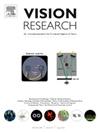Modulation of alerting and orienting attention on spatial suppression
IF 1.4
4区 心理学
Q4 NEUROSCIENCES
引用次数: 0
Abstract
Spatial suppression is a phenomenon in which, for high-contrast stimuli, larger stimuli typically elicit weaker neural responses and produce worse perceptual performance compared to smaller stimuli. This phenomenon is thought to arise from inhibitory connections between neurons. Although recent studies have suggested that feedback connections from high areas can influence these inhibitory processes, implying that attention may modulate spatial suppression, direct evidence for such modulation remains scarce. In particular, the impact of an important component of attention, alerting, has been overlooked. The present study aimed to explore the effects of two distinct components of attention—alerting and orienting—on spatial suppression. Our results indicate that alerting enhances spatial suppression. Furthermore, upon isolating the influence of orienting after controlling for alerting levels, we discovered that the influence of orienting on spatial suppression is feature-dependent. Specifically, while orienting attention to orientation enhances spatial suppression, orienting to contrast does not elicit the same effect. Our results indicate that spatial suppression is a flexible processing mechanism subject to widespread high-level cognitive modulations.
空间抑制下警觉和定向注意的调制
空间抑制是一种现象,对于高对比度的刺激,与较小的刺激相比,较大的刺激通常会引起较弱的神经反应,产生较差的感知表现。这种现象被认为是由神经元之间的抑制性连接引起的。虽然最近的研究表明,来自高区域的反馈连接可以影响这些抑制过程,这意味着注意可能调节空间抑制,但这种调节的直接证据仍然很少。特别是,注意力的一个重要组成部分——警觉的影响一直被忽视。本研究旨在探讨注意-警觉和定向两种不同成分对空间抑制的影响。我们的研究结果表明,警报增强了空间抑制。此外,在控制警报水平后,在隔离定向的影响后,我们发现定向对空间抑制的影响是特征依赖的。具体来说,虽然将注意力定向到方向会增强空间抑制,但定向到对比不会产生相同的效果。我们的研究结果表明,空间抑制是一种灵活的加工机制,受到广泛的高级认知调节。
本文章由计算机程序翻译,如有差异,请以英文原文为准。
求助全文
约1分钟内获得全文
求助全文
来源期刊

Vision Research
医学-神经科学
CiteScore
3.70
自引率
16.70%
发文量
111
审稿时长
66 days
期刊介绍:
Vision Research is a journal devoted to the functional aspects of human, vertebrate and invertebrate vision and publishes experimental and observational studies, reviews, and theoretical and computational analyses. Vision Research also publishes clinical studies relevant to normal visual function and basic research relevant to visual dysfunction or its clinical investigation. Functional aspects of vision is interpreted broadly, ranging from molecular and cellular function to perception and behavior. Detailed descriptions are encouraged but enough introductory background should be included for non-specialists. Theoretical and computational papers should give a sense of order to the facts or point to new verifiable observations. Papers dealing with questions in the history of vision science should stress the development of ideas in the field.
 求助内容:
求助内容: 应助结果提醒方式:
应助结果提醒方式:


